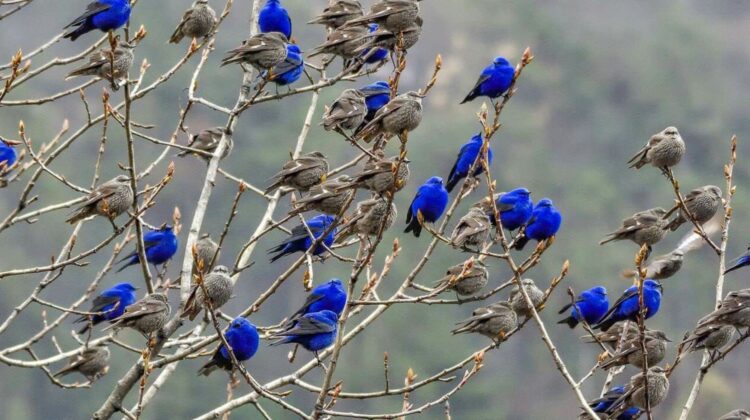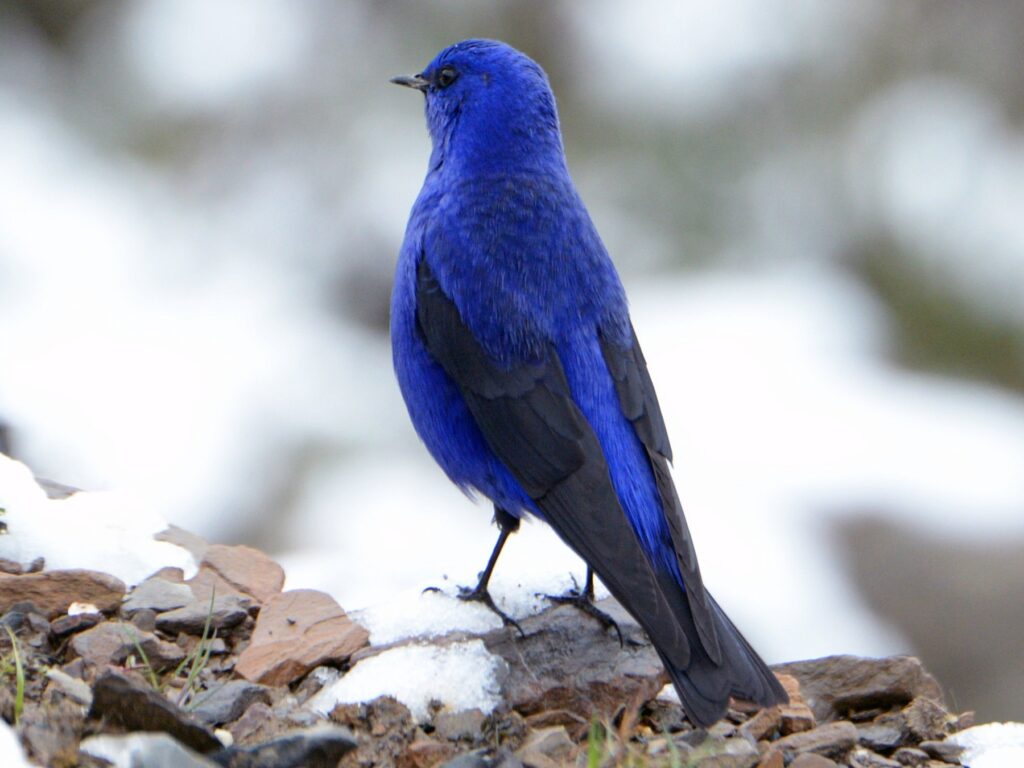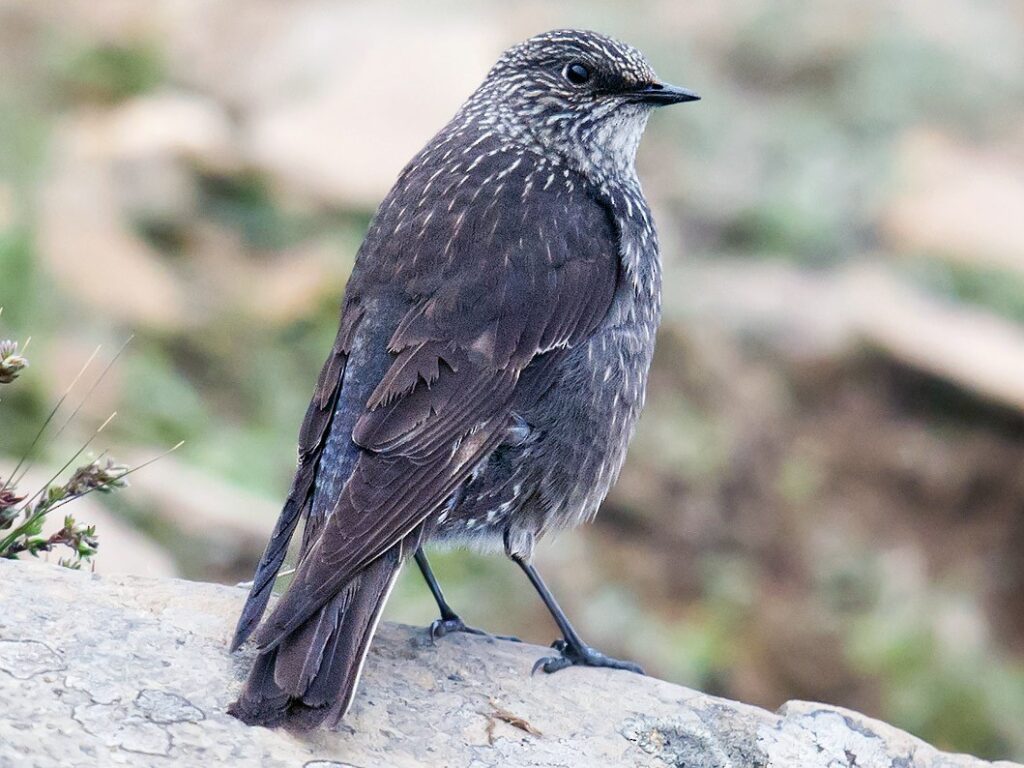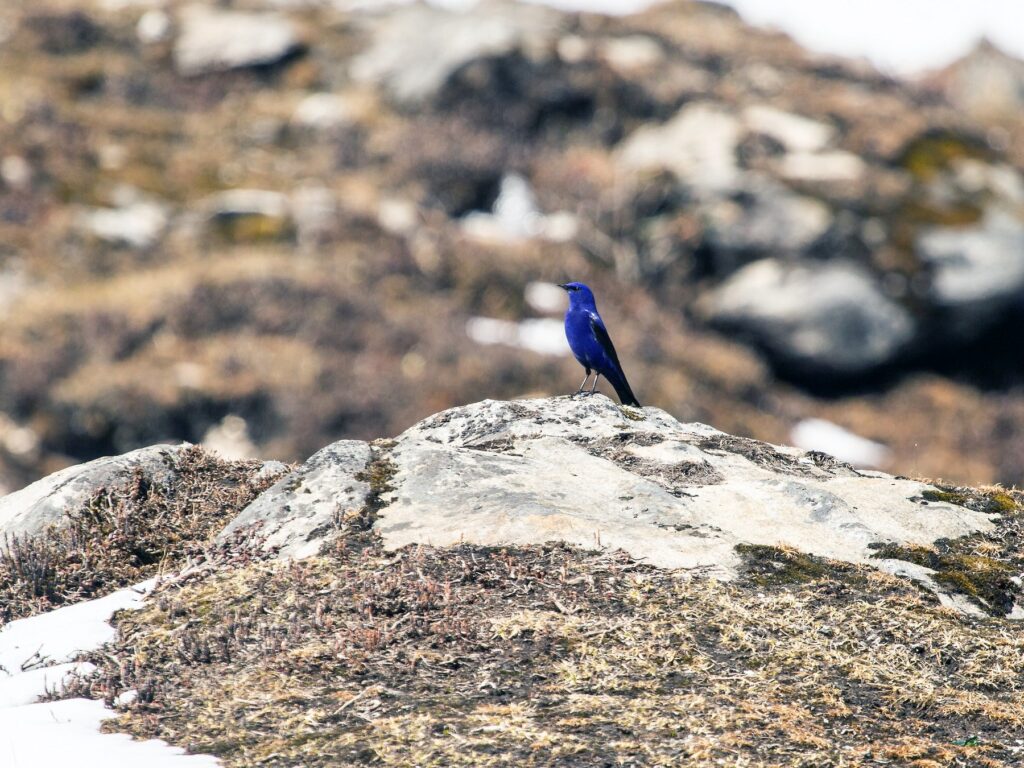
The Grandalas are a type of bird that are found in the Himalayas. They have a beautiful and eye-catching appearance, with their vibrant colors being one of their distinguishing features. Another interesting aspect about these birds is that there is a significant difference in appearance between males and females. The contrast is so noticeable that it’s easy to mistake them for different species altogether.

Female grandalas have a brown color with white streaks on their head, while males have a bright blue hue that is hard to miss. This contrast in coloring between the sexes is an example of sexual dimorphism, which pertains to the physical differences between male and female members of the same species.

It is not entirely clear why sexual dimorphism exists among grandalas. However, experts suggest that it could be connected to their breeding behavior. During the mating season, male grandalas flaunt their striking blue feathers to catch the attention of females. The brighter and more impressive their plumage, the higher their chances of being selected as a mate.

The grandalas, with their striking colors, are not widely recognized beyond the regions where they naturally thrive. These birds reside in the high-altitude forests of the Himalayas and are renowned for their elusive behavior. They are also fiercely territorial creatures that may exhibit aggression towards other avian species that intrude upon their turf.

The image taken by Rajesh Panwar in the northern region of Sikkim, India, showcases the striking difference in appearance between male and female grandalas. The male grandala features a vibrant blue plumage that almost appears electric when set against the brown and green surroundings, making it quite noticeable even from a distance.

To sum up, grandalas are an intriguing type of bird that stand out for their impressive coloring and noticeable differences between males and females. While female grandalas are mainly brown with white streaks, males display a dazzling shade of blue, exemplifying sexual dimorphism in the animal world. Despite their stunning appearance, grandalas remain relatively obscure beyond their natural habitat, which consists of high-altitude forests in the Himalayas.
